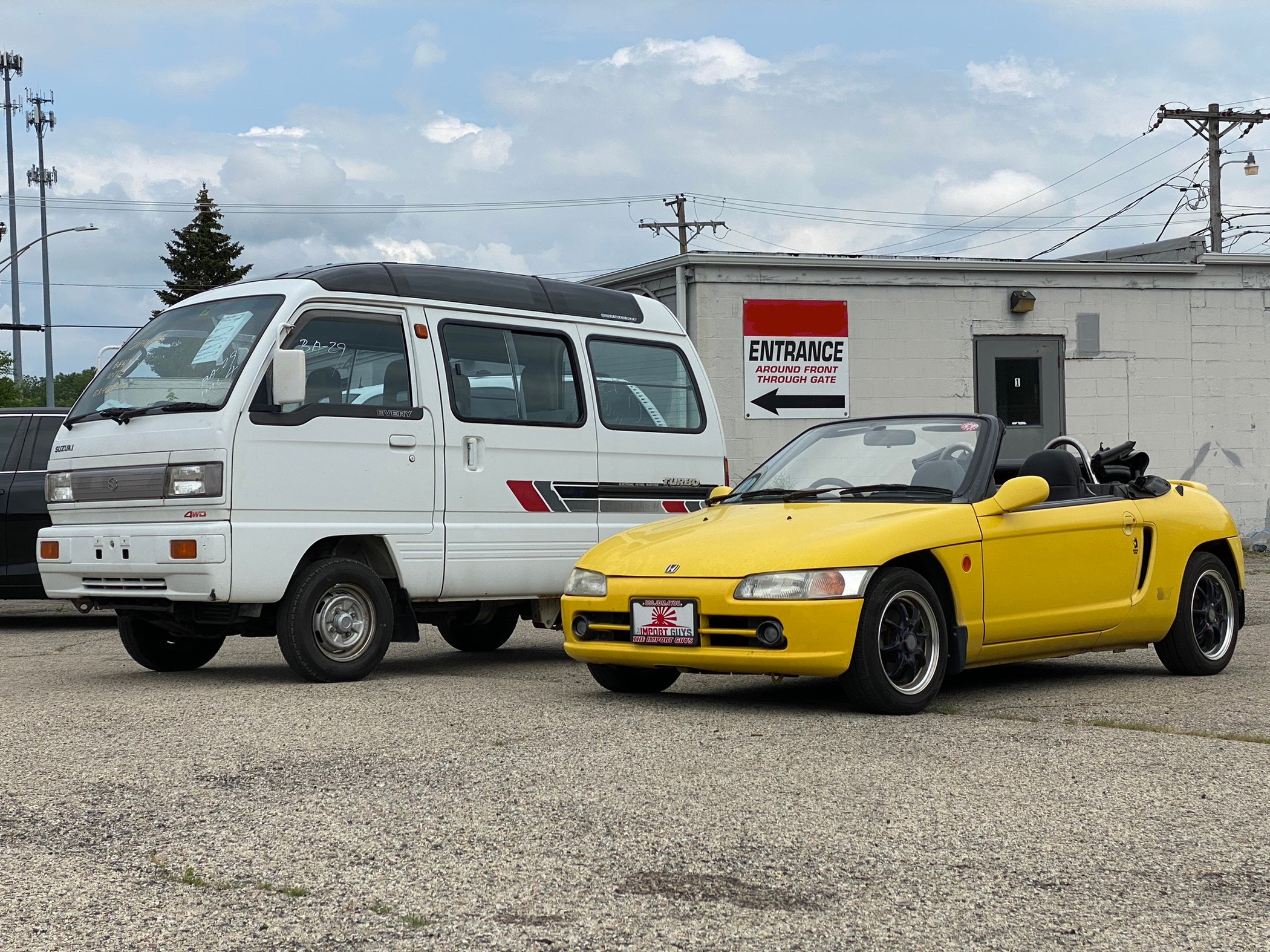Importing a car from Japan can seem like a daunting task, filled with complex procedures and unfamiliar regulations. However, for car enthusiasts seeking unique models, particularly JDM (Japanese Domestic Market) vehicles not available in their local market, the effort can be incredibly rewarding. This guide breaks down the process of importing a car from Japan yourself, highlighting key steps and considerations to help you navigate this exciting journey.
The initial step in importing a car is sourcing your vehicle. Japan boasts a vibrant automotive market with several avenues for purchasing cars destined for export.
One popular method is through Japanese car auctions. These auctions offer an extensive selection of vehicles, from everyday commuters to rare sports cars and vans. While accessing these auctions directly can be challenging, services like Japan Car Direct act as intermediaries, allowing foreign buyers to participate. For a fee, they provide access to auction listings, assist with bidding, and handle the logistics within Japan, such as deregistration and transportation to the port.
Another route is exploring car export websites. Platforms like TCV and Goo-net Exchange list cars for sale specifically for overseas buyers. Export sites can offer competitive prices, especially for budget-friendly options like kei trucks. However, it’s crucial to exercise caution and conduct thorough inspections before committing to a purchase. While these sites can unearth gems, they may also harbor vehicles with undisclosed issues. Consider arranging a pre-purchase inspection to assess the car’s condition before finalizing the deal.
It’s worth noting that while Goo-net also lists vehicles, prices may sometimes be inflated compared to export-focused sites. Additionally, listed prices might not always be the final asking price, with some sellers potentially increasing costs upon inquiry, even before factoring in shipping.
Japan’s auction system is arguably the most engaging way to find your ideal import. The sheer variety is astounding, with daily listings encompassing everything from specialized trucks to sought-after vans. To participate, you’ll typically need to go through an importer or exporter. While browsing listings is usually free, bidding often requires a deposit, and service fees may apply for using the importer/exporter’s services.
Once you’ve purchased your car in Japan, the next step is to arrange shipping. If you’ve used an exporter like Japan Car Direct, they typically handle the transportation of the vehicle to the port and booking it onto a ship. However, if you’ve bought a car privately, you’ll need to engage a freight forwarder. These companies specialize in the logistics of getting your car from its location to the port and onto an ocean vessel.
Ocean shipping for cars is commonly done via roll-on/roll-off (RoRo) ships. These specialized vessels are designed to carry wheeled cargo, simplifying the loading and unloading process. Shipping costs can vary based on vehicle size and port locations, but expect to pay around a few hundred dollars for inland transport within Japan and approximately $1,000 for RoRo shipping to the US, depending on your car’s dimensions.
Prior to your car departing from Japan, the crucial stage of US Customs clearance begins. Many sources, including experienced importers, emphasize the near necessity of using a Customs Broker for this phase. The paperwork is extensive, and even minor errors can lead to significant delays and complications. Attempting to navigate this process without expert assistance can be incredibly time-consuming and frustrating, potentially requiring repeated visits to the port with correctly filled forms.
However, if you’re determined to handle customs clearance yourself, the first critical step is filing an Importer Security Filing (ISF) form. This form must be submitted to U.S. Customs and Border Protection (CBP) at least 24 hours before your car is loaded onto the ship in Japan. Accuracy and timely submission are paramount; errors or delays can result in substantial fines, potentially reaching $5,000.
The ISF form requires detailed information, including:
- Importer identified numbers (EIN or SSN, name, and address)
- Consignee identified number(s)
- Buyer name and address
- Seller name and address
- Manufacturer stuffing location
- Container stuffing location
- Stuffer name and address
- Country of origin
- Commodity Harmonized Tariff Schedule number
- Master bill of lading number
- House bill of lading number
Your exporter or seller should provide most of this information. You can utilize online services to digitally complete and file the ISF form for a fee, offering a more affordable alternative to a Customs Broker. While a Customs Broker provides expert guidance and minimizes the risk of errors, digital filing can be a viable option if you are meticulous and ensure all details are accurate.
The subsequent customs procedures depend largely on the declared value of your imported car. For vehicles valued under $2,500, CBP offers a simplified process known as an Informal Entry. This streamlined approach expedites customs clearance and is applicable to many imported Japanese vehicles, including kei vans, kei trucks, Suzuki Jimnys, and Honda Beats.
To complete an Informal Entry, you’ll need to fill out specific forms designated by CBP. Consult the CBP website or relevant resources for the precise forms required at the time of import, as these can be subject to change.
Importing a car from Japan yourself demands careful planning, attention to detail, and a willingness to navigate complex processes. While engaging an importer simplifies the journey, handling the import independently offers a unique sense of accomplishment and potentially cost savings. Whether you choose to enlist professional help or go it alone, understanding each step is key to successfully bringing your dream Japanese car to your home.


